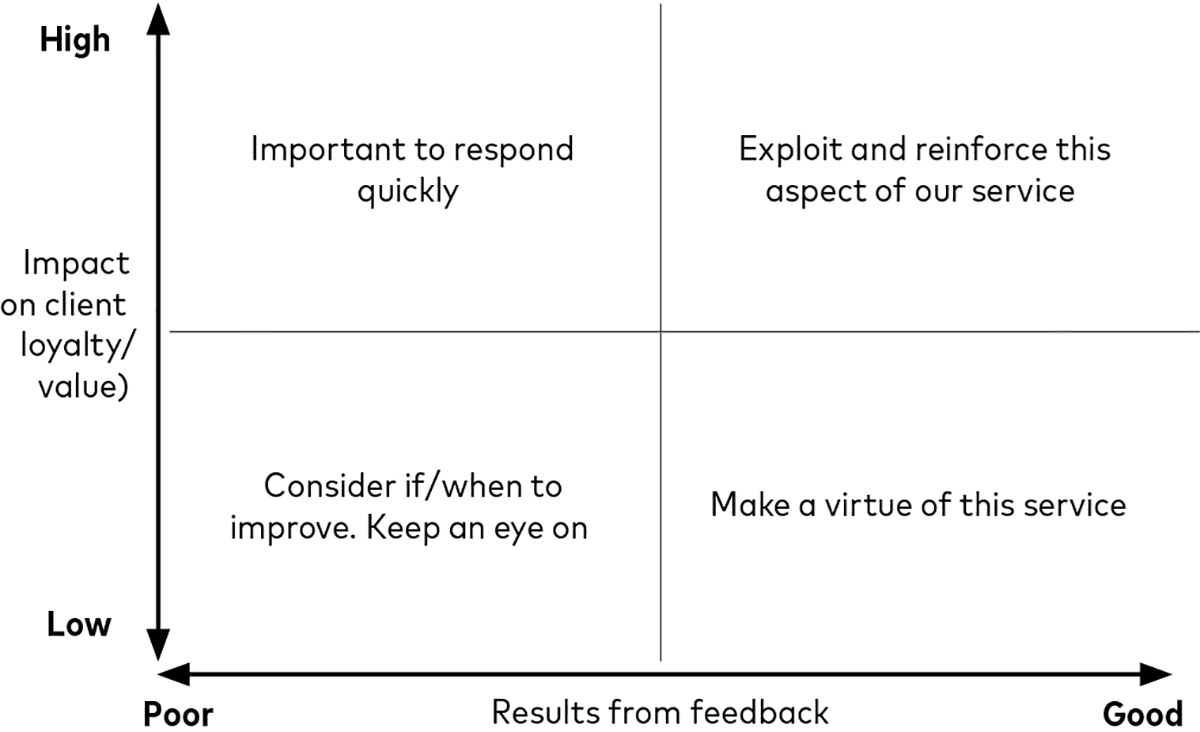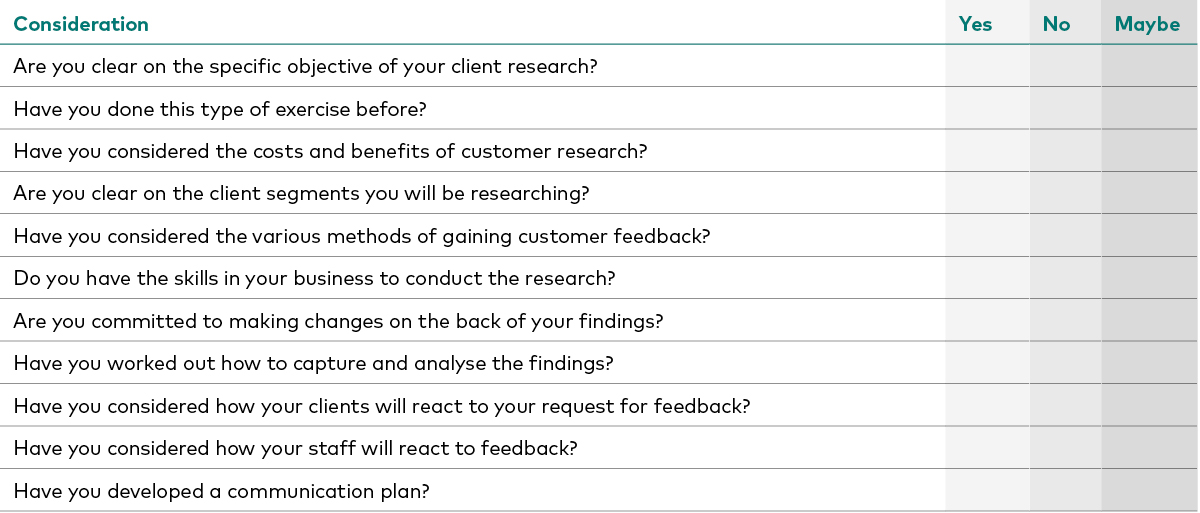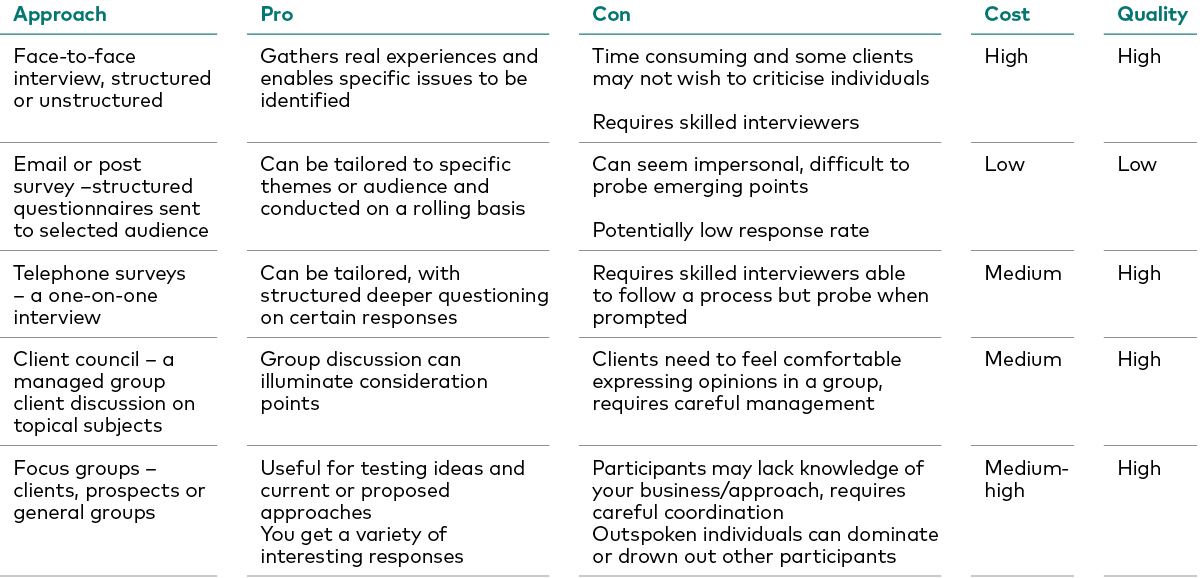Step five: use the results to improve
To use the feedback effectively you need to prioritise it and develop an action plan. You might find it useful to use a simple priority grid comparing impact against quality, such as the one below. Plotting each feedback theme onto a grid like this can help you deduce which pieces of feedback to celebrate or tackle.

Communicate the results
Think about how you’ll communicate the results of your feedback to your key stakeholders. Thank clients who participated and give them details of the findings and what you intend to do about them. This reinforces the importance of their contribution and encourages them to provide valuable feedback in future.
You will also need to discuss feedback with your staff. Never use feedback as a weapon but use it as an opportunity to engage with your staff to improve processes. Involving your people in the decision-making process will improve staff engagement. Collaborating with them on how to improve the situation means you stand a better chance of getting the ideas implemented. When you have settled on your required improvements, give each improvement an owner and incentivise them to deliver on it.
Step six: measure improvements
You will need to monitor the changes you’ve made to see if they produce the desired outcome. You may have a very specific outcome in mind, perhaps improving part of your client programme, and if so it may be easy to notice the impact the changes are making. If the changes are broader, you may need to put several monitors in place to check progress. A random sampling of clients may help provide some interim feedback.
Continuous improvement
As you improve your business your competitors will respond by improving theirs. As a result, client expectations will continue to rise, so to remain successful you will need to improve your client experience by constantly monitoring delivery.
While client feedback can be used ad hoc, using it continually will ensure that you can measure and implement improvements over time. Clients like to see a firm that is striving to improve. Researching the same themes over time will give you in-depth insights into the impact the changes have made. Be aware that you may not always see the impact in the short term; it may take a significant number of your clients to complete a whole business cycle (for example, a complete year of reviews) or enough clients to experience a new service for you to see a statistically significant result.
Conclusion
Demonstrating a genuine desire to optimise your business services for your clients through engaging with them for feedback is a tangible way to illustrate their importance to you. The hope is that this, in turn, will encourage a loyal long-term relationship, fulfilling (or exceeding) their expected level of service and providing advice with true value. The importance of building and retaining loyal clients cannot be overstated and it will be your ability to meet your client’s expectations ‘as promised’ that will determine their loyalty to you. By leveraging customer feedback effectively, you can position yourself for long-term success in an increasingly competitive market.
Action points





